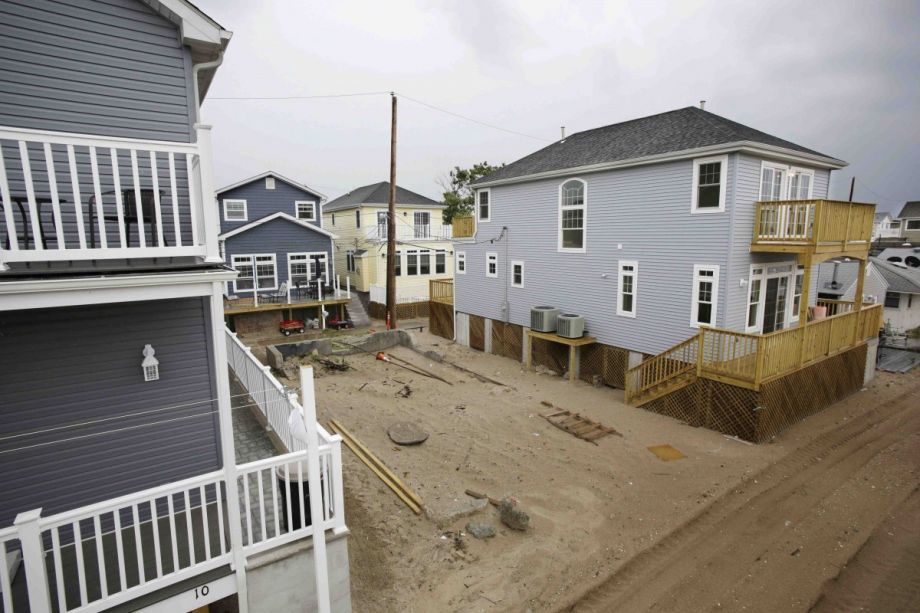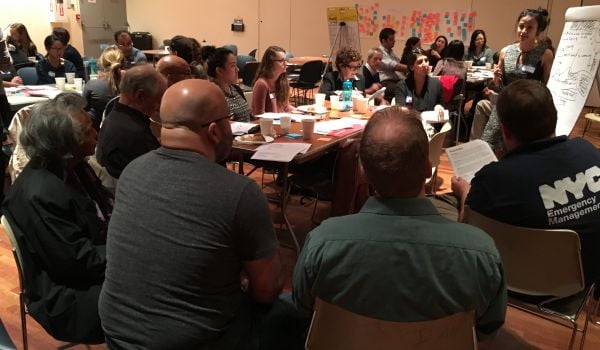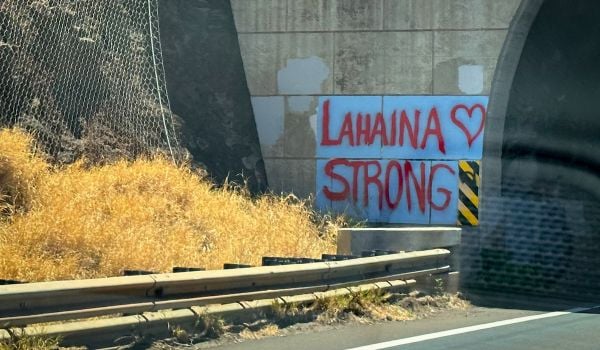EDITOR’S NOTE: Next City is a partner in #CoveringClimateNow, a global collaboration of more than 250 news outlets to strengthen coverage of the climate story. Read Next City’s other stories for this initiative here.
For the first time in nearly 30 years, the Federal Emergency Management Agency (FEMA) is significantly redrawing New York City’s flood maps. But what would appear to be a simple, data-driven task based on past flooding patterns will be complicated in post-Harvey, -Irma and -Maria 2018 not just by climate change, but by local politics and neighborhood pushback.
New York will be the first major city to be remapped with climate change in mind, the New York Times reports. Cartographers will take into account the new normal of rising sea levels and increasingly frequent 100-year (and 500-year) storms. It’s certainly a necessary undertaking. FEMA’s maps represent the agency’s flood plain estimates, and when a property is located inside one of those plains, its owners are required to buy flood insurance. But the maps were no match for a storm like Harvey. As Slate reported last year, roughly 40 percent of flood victims didn’t have insurance because their homes weren’t located in Houston’s supposed flood plain.

But as Next City has covered, flood insurance premiums are expensive, and rising precipitously. The government’s National Flood Insurance Program (NFIP) has been boosting costs over the last several years in an attempt to get itself out of the (deep) red. The NFIP was due to come up for reauthorization by Congress on December 8, 2017 — by which time its long-term fiscal outlook was supposed to be stabilized. That reauthorization was punted to December 22, then to January 19, 2018. There are concerns that if premiums are allowed to continue surging, they’ll harm entire housing markets and economies, particularly in cities where, suddenly, an entire downtown, or 40 percent more residents are located within the flood plain.
And in New York City, most (80 percent) of the properties were built before even the current flood maps and requirements were in place (compared to roughly 20 percent nationally) the New York Times reports. From the paper:
If those older buildings end up in high-risk zones, their owners could be required to buy flood insurance or make expensive modifications, adding costs that are beyond the reach of many working-class homeowners.
The collision of science with political and economic realities means that the battle over how many more people will fall in the flood zones will be fought house by house, block by block, with millions of dollars at stake.
Formal discussions on the maps between the city and the federal agency are set to begin in the next few weeks, but no matter the outcome, yearly costs will likely be going up for a lot of people. And property owners won’t be the only ones hit. As Graham T. Beck wrote for Next City in 2014, flood-proofing multi-family buildings could mean eliminating ground-floor or basement units, which could have a ripple effect — shrinking the supply of affordable units and increasing demand.
The city does have a history of pushing back against FEMA. When the agency proposed preliminary new maps in 2013 (which would have doubled both the size of previous flood zones) the city successfully challenged it. But climate change isn’t going anywhere, at least not anytime soon, and coastal cities like New York are in for a lot more flooding. As the Times points out, with more than 50,000 homeless people and an avowed affordability crisis already, “the FEMA maps could add further financial strain.”

Rachel Dovey is an award-winning freelance writer and former USC Annenberg fellow living at the northern tip of California’s Bay Area. She writes about infrastructure, water and climate change and has been published by Bust, Wired, Paste, SF Weekly, the East Bay Express and the North Bay Bohemian
Follow Rachel .(JavaScript must be enabled to view this email address)
















